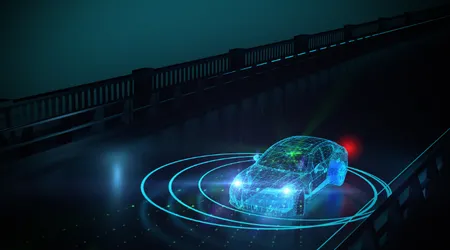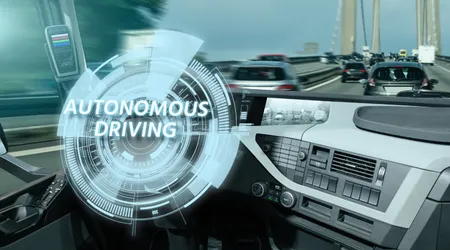The Role of LiDAR in Semi-Autonomous Driving Systems
Anúncios
Role of LiDAR: the rapid evolution of semi-autonomous driving systems has reshaped the automotive industry, promising safer roads and enhanced mobility.
Central to this transformation is LiDAR (Light Detection and Ranging), a technology that serves as the eyes of self-driving vehicles.
By emitting laser pulses and measuring their return time, LiDAR creates precise, three-dimensional maps of a vehicle’s surroundings.
Role of LiDAR

Anúncios
This article explores the pivotal role of LiDAR in enabling semi-autonomous driving systems, delving into its technical contributions, practical applications, and future potential.
Through innovative examples, compelling statistics, and a thought-provoking analogy, we uncover why LiDAR remains a cornerstone of modern automotive innovation.
How can a technology so precise yet so complex redefine the way we navigate the world?
LiDAR’s Technical Edge in Semi-Autonomous Driving

LiDAR’s ability to deliver high-resolution, real-time environmental mapping sets it apart from other sensors like cameras and radar.
Unlike cameras, which rely on visible light and struggle in low-visibility conditions such as fog or darkness, LiDAR uses laser pulses to detect objects with unparalleled accuracy.
++ Solid-State Batteries in Cars: What You Need to Know in 2025
This makes it indispensable for semi-autonomous systems, which require robust data to navigate complex urban environments.
For instance, LiDAR can distinguish a pedestrian from a lamppost at a distance of 200 meters, even in adverse weather, ensuring vehicles make informed decisions swiftly.
Moreover, LiDAR’s precision enhances the functionality of Advanced Driver Assistance Systems (ADAS).
It provides detailed spatial data that complements radar’s velocity measurements and camera-based object recognition.
Consequently, semi-autonomous vehicles equipped with LiDAR can execute tasks like lane-keeping, adaptive cruise control, and collision avoidance with greater reliability.
A 2023 study by the National Highway Traffic Safety Administration revealed that vehicles with LiDAR-based ADAS reduced rear-end collisions by 34% compared to those relying solely on radar and cameras.
This statistic underscores LiDAR’s critical role in improving safety.
Consider the analogy of LiDAR as a master cartographer crafting a dynamic map in real time.
Just as a cartographer meticulously charts unknown terrain, LiDAR scans the environment, plotting every obstacle with precision to guide the vehicle’s journey.
This capability is vital for Level 3 and Level 4 autonomy, where the vehicle assumes most driving tasks but may require human intervention.
By integrating LiDAR, manufacturers ensure that semi-autonomous systems operate with a level of situational awareness that rivals human perception, paving the way for safer and more efficient transportation.
Practical Applications of LiDAR in Real-World Scenarios

LiDAR’s practical applications in semi-autonomous driving extend beyond technical prowess to real-world problem-solving.
For example, consider a delivery van navigating a crowded urban street during rush hour.
Equipped with LiDAR, the van detects a cyclist weaving through traffic, adjusts its speed, and recalibrates its path in milliseconds to avoid a collision.
This scenario highlights how LiDAR’s real-time data processing enables vehicles to respond dynamically to unpredictable environments, a necessity for semi-autonomous systems operating in cities.
Additionally, LiDAR enhances fleet management for ride-sharing services.
Imagine a ride-sharing company deploying a fleet of semi-autonomous vehicles in a metropolitan area.
LiDAR-equipped cars can map high-traffic zones, identify optimal routes, and detect road hazards like construction barriers.
++ How Over-the-Air Updates Are Redefining Car Ownership
This not only improves passenger safety but also optimizes fuel efficiency and reduces operational costs.
By contrast, vehicles without LiDAR may struggle to adapt to sudden changes, such as a blocked lane, leading to delays or unsafe maneuvers.
Furthermore, LiDAR’s role in semi-autonomous systems extends to rural and highway settings.
In rural areas, where roads may lack clear lane markings, LiDAR’s 3D mapping ensures vehicles stay on course by detecting road edges and obstacles like fallen branches.
On highways, LiDAR supports features like automated lane changes by providing a 360-degree view of surrounding vehicles.
These applications demonstrate LiDAR’s versatility, making it a linchpin for semi-autonomous driving across diverse environments.
| Application | LiDAR Contribution | Benefit |
|---|---|---|
| Urban Navigation | Detects pedestrians, cyclists, and obstacles in real time | Enhances safety and responsiveness |
| Fleet Management | Maps high-traffic zones and optimizes routes | Reduces costs and improves efficiency |
| Rural and Highway Driving | Provides accurate road edge detection and 360-degree vehicle monitoring | Ensures stability and safe lane changes |
Challenges and Innovations in LiDAR Integration
Despite its advantages, integrating LiDAR into semi-autonomous systems presents challenges, particularly cost and scalability.
++ 5G in Cars: What It Actually Enables in Real-Time Driving
Historically, LiDAR units were prohibitively expensive, with early models costing upwards of $75,000. However, recent innovations have driven costs down significantly.
For instance, solid-state LiDAR systems, which eliminate moving parts, are now available for under $1,000, making them viable for mass-market vehicles.
This cost reduction has democratized access to LiDAR, enabling more manufacturers to incorporate it into semi-autonomous systems.
Another challenge is LiDAR’s data processing demands. The technology generates vast amounts of data up to 1.8 million points per second requiring robust computational systems to interpret it in real time.
To address this, companies are developing AI-driven algorithms that filter and prioritize LiDAR data, ensuring only critical information is processed.
For example, a semi-autonomous SUV navigating a snowy mountain pass uses AI to focus LiDAR’s attention on nearby obstacles, ignoring irrelevant data like distant trees. This innovation enhances efficiency and reduces the computational burden.
Looking ahead, hybrid LiDAR systems are emerging as a game-changer.
These systems combine LiDAR with other sensors, such as thermal cameras, to enhance performance in extreme conditions like heavy rain or snow.
By integrating multiple data sources, hybrid systems mitigate LiDAR’s limitations, such as reduced effectiveness in dense fog.
Consequently, these advancements ensure that LiDAR remains a vital component of semi-autonomous driving, even as environmental challenges persist.
| Challenge | Innovation | Impact |
|---|---|---|
| High Cost | Solid-state LiDAR reduces costs to under $1,000 | Increases accessibility for manufacturers |
| Data Processing Demands | AI-driven algorithms prioritize critical data | Improves real-time decision-making |
| Environmental Limitations | Hybrid systems with thermal cameras enhance performance in adverse conditions | Ensures reliability across environments |
The Future of LiDAR in Semi-Autonomous Driving
As semi-autonomous driving systems evolve, LiDAR’s role will expand, driven by advancements in miniaturization and integration.
Smaller, more compact LiDAR units are being embedded directly into vehicle headlights or side mirrors, reducing aesthetic and aerodynamic concerns.
This trend not only improves vehicle design but also lowers production costs, making LiDAR a standard feature in future models.
Consequently, we can expect semi-autonomous vehicles to become more accessible to consumers, accelerating adoption.
Moreover, LiDAR’s synergy with vehicle-to-everything (V2X) communication systems holds immense potential.
By sharing LiDAR data with other vehicles and infrastructure, semi-autonomous systems can anticipate road conditions beyond their immediate line of sight.
For instance, a vehicle approaching an intersection could receive LiDAR data from a nearby traffic light, alerting it to an oncoming vehicle hidden by a building.
This interconnected approach enhances safety and efficiency, positioning LiDAR as a catalyst for smart cities.
What does the future hold for LiDAR in semi-autonomous driving?
The answer lies in its ability to adapt and innovate.
As manufacturers refine LiDAR’s capabilities and integrate it with emerging technologies like 5G and edge computing, the technology will enable vehicles to navigate with unprecedented precision.
By fostering collaboration between vehicles, infrastructure, and AI, LiDAR will not only enhance semi-autonomous systems but also pave the way for fully autonomous driving in the decades to come.
Role of LiDAR: Frequently Asked Questions
| Question | Answer |
|---|---|
| How does LiDAR differ from radar and cameras? | LiDAR uses laser pulses for 3D mapping, offering higher precision than radar’s velocity focus or cameras’ light-dependent imaging. |
| Is LiDAR effective in bad weather? | While LiDAR performs well in low light, heavy rain or fog can reduce effectiveness. Hybrid systems mitigate these limitations. |
| Why is LiDAR expensive for semi-autonomous cars? | Early LiDAR units were costly due to complex mechanics, but solid-state models have lowered costs significantly. |
| Can LiDAR work without other sensors? | LiDAR is most effective when paired with radar and cameras, as each sensor complements the others’ strengths. |
| Will LiDAR be standard in all vehicles? | As costs decrease and integration improves, LiDAR is likely to become a standard feature in semi-autonomous vehicles. |
Conclusion: Role of LiDAR
The role of LiDAR in semi-autonomous driving systems is transformative, offering unmatched precision, safety, and adaptability.
From navigating bustling city streets to optimizing fleet operations, LiDAR empowers vehicles to make split-second decisions with confidence.
Despite challenges like cost and data processing, innovations such as solid-state systems and AI-driven algorithms are making LiDAR more accessible and efficient.
As the technology evolves, its integration with V2X systems and compact designs will redefine transportation, bringing us closer to a future where roads are safer and smarter.
With LiDAR at the helm, semi-autonomous driving is not just a possibility it’s a reality reshaping our world.
